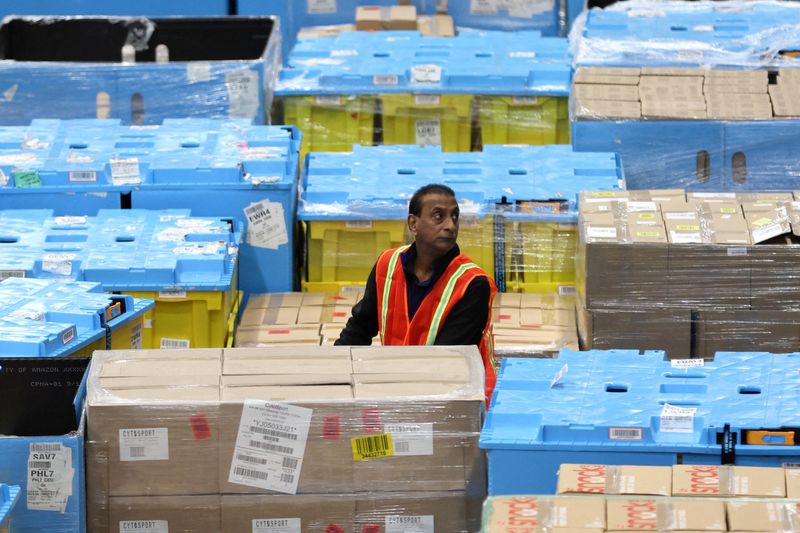(Reuters) – U.S. job growth accelerated in November while the unemployment rate fell to 3.7%, signs of underlying labor market strength that suggested financial market expectations of an interest rate cut early next year were probably premature.
The Labor Department’s closely-watched employment report on Friday, which showed annual wage steady last month, did not change views that the Federal Reserve’s rate hiking cycle was complete. The U.S. central bank is expected to keep rates unchanged next Wednesday. It has raised its policy rate by 525 basis points, to the current 5.25%-5.50% range, since March 2022.
“Those 100 basis points of rate cuts the market is talking about in 2024 will be just a fairy tale if the labor market does not rebalance further in the months ahead,” said Christopher Rupkey, chief economist at FWDBONDS in New York. “Fed officials are not going to like this report.”
Nonfarm payrolls increased by 199,000 jobs last month after rising by an unrevised 150,000 in October, the Labor Department’s Bureau of Labor Statistics said. Though employment growth was below the average monthly 240,000 over the past 12 months, the gains are well above the 100,000 jobs per month needed to keep up with growth in the working age population.
Economists polled by Reuters had forecast 180,000 jobs created. Employment was in part boosted by the return of automobile workers and actors after strikes.
Last month’s almost broad increase in employment was led by the healthcare sector, which added 77,000 jobs, most of which were in ambulatory services as well as at hospitals, nursing and residential care facilities. Government payrolls jumped by 49,000, boosted by local government hiring.
Manufacturing employment rose by 28,000 job, with motor
vehicles and parts jobs rising by 30,000 as members of the United Auto Workers (UAW) union returned to work after striking against Detroit’s “Big Three” car makers.
Leisure and hospitality payrolls advanced 40,000, driven mostly by hiring at restaurants and bars.
But retail employment fell by 38,000 jobs amid declines at department stores as well as furniture, home furnishings, electronics and appliance outlets.
Financial markets lowered their bets of a rate cut as soon as next March in the wake of the strong employment report. U.S. stocks opened lower. The dollar rose against a basket of currencies. U.S. Treasury prices fell.
Details of the smaller household survey from which the unemployment rate is derived were equally upbeat. Household employment surged by 747,000 jobs last month, more than absorbing the new 532,000 entrants to the labor market.
As a result, the unemployment rate dropped to 3.7% from nearly a two-year high of 3.9% in October. The labor force participation rate, or the proportion of working-age Americans who have a job or are looking for one, rose to 62.8% from 62.7% in the prior month.
If sustained, the rise in labor supply could over time help to tamp down wage inflation. Average hourly earnings increased 0.4% last month after gaining 0.2% in October. That kept the annual increase in wages at 4.0% in November.



